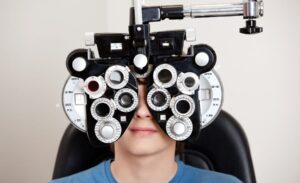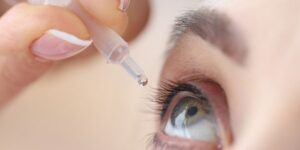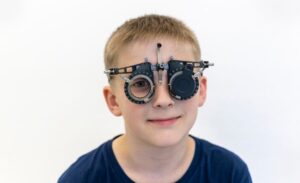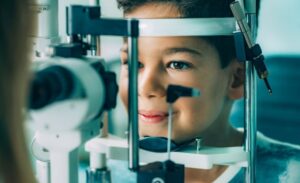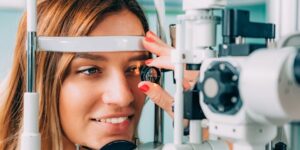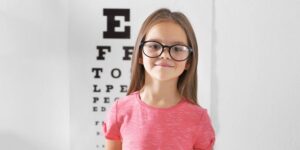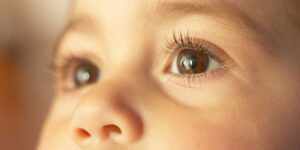Understanding Myopia Control
When it comes to the well-being of their children’s vision, parents are often concerned about managing myopia, commonly known as nearsightedness. Understanding what myopia is and the importance of controlling its progression is key to maintaining good eye health. One effective method for managing myopia is through the power of myopia control lenses.
What is Myopia?
Myopia is a refractive error that causes distant objects to appear blurry, while close objects remain clear. It occurs when the eyeball grows too long or the cornea is too curved, causing light to focus in front of the retina instead of directly on it. Myopia is a common condition, affecting millions of people worldwide, and its prevalence has been increasing significantly in recent years.
The Importance of Myopia Control
Myopia control is crucial because high levels of myopia can increase the risk of developing eye health issues later in life, such as cataracts, glaucoma, and retinal detachment. Additionally, individuals with higher levels of myopia are more susceptible to vision loss and complications associated with these conditions. By controlling myopia progression, we can potentially reduce the risks and long-term complications associated with high myopia.
Introduction to Myopia Control Lenses
Myopia control lenses are a type of specialized contact lenses designed to slow down the progression of myopia in children and teenagers. These lenses are available in various designs and materials, each with its unique mechanism of action.
One common type of myopia control lens is the multifocal contact lens, which incorporates multiple prescriptions within the lens. This allows for clear vision at different distances, while simultaneously providing peripheral defocus. The peripheral defocus helps to slow down the elongation of the eyeball, which is a major contributing factor to myopia progression.
Another type of myopia control lens is the orthokeratology lens, commonly known as ortho-k lenses. These lenses are worn overnight and gently reshape the cornea, temporarily correcting myopia during the day. By providing clear vision without the need for glasses or contact lenses during waking hours, ortho-k lenses can help manage myopia progression.
It’s important to note that myopia control lenses should be prescribed and fitted by an eye care professional. They will determine the most suitable lens design and guide parents and children on proper usage and maintenance. Regular follow-up visits are necessary to monitor the effectiveness of the lenses and ensure optimal eye health.
By understanding what myopia is and the significance of myopia control, parents can take proactive steps to manage their children’s vision. Myopia control lenses, such as multifocal and ortho-k lenses, are effective tools in slowing down myopia progression and reducing the risks associated with high myopia. Consultation with an eye care professional is essential to determine the best approach for your child’s specific needs.
How Myopia Control Lenses Work
Defying Short-Sightedness
Myopia control lenses play a crucial role in managing and slowing down the progression of myopia, commonly known as short-sightedness. By understanding how these lenses work, parents can make informed decisions regarding their children’s eye health.
Myopia control lenses are specifically designed to address the underlying causes of myopia progression. These lenses work by altering the way light enters the eye, thus reducing the strain on the eyes and helping to slow down the elongation of the eyeball, which is a major factor in the development and progression of myopia.
Types of Myopia Control Lenses
There are several types of myopia control lenses available, each with its own unique characteristics and benefits. Below are three common types of myopia control lenses:
- Multifocal Contact Lenses: Multifocal contact lenses have different zones that correct vision at various distances, allowing individuals to see clearly at different focal lengths. These lenses can help to slow down myopia progression by providing clear vision for both near and distance tasks, reducing the strain on the eyes. They are typically worn during the day and removed at night.
- Orthokeratology Contact Lenses: Orthokeratology (Ortho-k) contact lenses are specially designed gas-permeable lenses that are worn overnight. These lenses gently reshape the cornea while you sleep, temporarily correcting the curvature of the eye. By wearing Ortho-k lenses regularly, individuals can enjoy clear vision during the day without the need for glasses or contact lenses. Ortho-k lenses are particularly beneficial for children as they can slow down myopia progression.
- Multifocal Eyeglasses: Multifocal eyeglasses, also known as progressive lenses, provide clear vision at different distances, including both near and far. These lenses have multiple lens powers incorporated into a single lens, allowing for seamless transitions between different distances. Multifocal eyeglasses can be an effective option for myopia control, providing clear vision while reducing the strain on the eyes.
It’s important to consult with an eye care professional to determine the most suitable type of myopia control lens for your child. They will consider factors such as your child’s age, prescription, and lifestyle to recommend the best option. Regular eye exams and monitoring are essential to ensure that the chosen myopia control lenses are effectively managing the progression of myopia. For more information on myopia control methods, you can refer to our article on myopia control methods.
By understanding how myopia control lenses work and exploring the different types available, parents can take proactive steps to manage their children’s myopia and ensure good long-term eye health.
Benefits of Myopia Control Lenses
Myopia control lenses offer several benefits in the management of myopia, also known as nearsightedness. These lenses are specifically designed to slow down the progression of myopia in children and teenagers, reducing the need for stronger prescription glasses over time. Let’s explore the key benefits of myopia control lenses: slowing down myopia progression and reducing the risk of eye health issues.
Slowing Down Myopia Progression
One of the primary benefits of myopia control lenses is their ability to slow down the progression of myopia in children. By using specialized lenses, such as multifocal contact lenses or orthokeratology lenses, the eye’s growth and elongation process can be regulated. These lenses work by altering the way light focuses on the retina, which helps to slow down the elongation of the eyeball that leads to myopia progression.
Studies have shown that myopia control lenses can significantly reduce the rate of myopia progression in children. Slowing down the progression of myopia can have a long-term positive impact, as it can potentially reduce the risk of developing high myopia, which is associated with an increased risk of eye conditions such as retinal detachment, glaucoma, and macular degeneration.
Reducing the Risk of Eye Health Issues
By slowing down the progression of myopia, myopia control lenses can also help reduce the risk of associated eye health issues. High myopia is a known risk factor for various eye conditions that can affect vision and overall eye health. By implementing myopia control measures early on, such as using myopia control lenses, the risk of these complications can be minimized.
Research has shown that reducing the progression of myopia by just 1 diopter can lead to a substantial decrease in the risk of developing sight-threatening eye conditions later in life. Myopia control lenses play a crucial role in achieving this, as they help manage the progression of myopia during critical periods of eye development.
It’s important to note that myopia control lenses should be used under the guidance and supervision of an eye care professional. They will assess your child’s specific needs and determine the most suitable type of myopia control lens for their condition. Regular eye exams and monitoring are essential to ensure the effectiveness of the lenses and to make any necessary adjustments.
By utilizing myopia control lenses, parents can take proactive steps to manage their child’s myopia and potentially reduce the risks associated with high myopia. Alongside other myopia control strategies, such as encouraging outdoor activities and limiting screen time, myopia control lenses can contribute to the long-term eye health and well-being of children with myopia.
Considerations for Myopia Control Lenses
When considering myopia control lenses for your child, there are several important factors to keep in mind. These considerations will help ensure that your child receives the most effective treatment and achieves the desired outcomes.
Consultation with an Eye Care Professional
Before starting any myopia control treatment, it is crucial to schedule a consultation with an eye care professional. They will conduct a comprehensive eye examination to assess your child’s vision and determine the most suitable myopia control options. This examination may include measuring the degree of myopia, evaluating the overall eye health, and discussing your child’s lifestyle and visual needs.
During the consultation, don’t hesitate to ask questions and seek clarification on any concerns you may have. An eye care professional can provide valuable guidance and recommend the best course of action based on your child’s specific needs.
Proper Usage and Maintenance
To ensure the effectiveness of myopia control lenses, it is essential to follow the prescribed usage and maintenance instructions provided by the eye care professional. This includes wearing the lenses for the recommended duration each day and adhering to the prescribed replacement schedule.
Proper hygiene is of utmost importance when it comes to contact lenses. Teach your child the importance of cleaning and storing the lenses correctly to minimize the risk of eye infections or discomfort. Emphasize the need to wash hands thoroughly before handling the lenses and to avoid using tap water or saliva for cleaning purposes.
Lifestyle Factors and Myopia Control
While myopia control lenses can be an effective tool in managing myopia, it’s important to consider other lifestyle factors that can contribute to myopia progression. Encourage your child to spend more time outdoors, as studies have shown that increased outdoor activities can help reduce the risk of myopia development and progression. Limiting screen time and encouraging regular breaks from near work activities, such as reading or using electronic devices, can also be beneficial.
Additionally, maintaining a well-balanced diet that includes foods rich in nutrients like vitamin D and omega-3 fatty acids may support overall eye health. Consult with a healthcare professional or a registered dietitian for personalized dietary recommendations.
By considering these factors, you can ensure that your child receives the greatest benefit from myopia control lenses. Remember to stay in regular contact with your eye care professional to monitor your child’s progress and make any necessary adjustments to the treatment plan. For additional information on myopia control methods, feel free to explore our article on myopia control methods.
Supporting Your Child’s Eye Health
As a parent, there are various ways you can support your child’s eye health and promote good vision. In addition to using myopia control lenses to manage their myopia, incorporating healthy habits, regular eye exams, and exploring other myopia control strategies can make a significant difference.
Healthy Habits for Good Vision
Encouraging your child to adopt healthy habits can contribute to their overall eye health. Here are some tips to promote good vision:
- Limit screen time: Excessive screen time can strain the eyes and contribute to myopia progression. Encourage your child to take regular breaks and engage in activities that involve looking at objects in the distance.
- Outdoor time: Spending time outdoors has been associated with a reduced risk of myopia development. Encourage your child to engage in outdoor activities and spend time in natural light.
- Proper lighting: Ensure that your child has adequate lighting when reading or doing close-up work. Insufficient lighting can strain the eyes and contribute to eye fatigue.
- Healthy diet: A well-balanced diet rich in fruits and vegetables, particularly those high in vitamin C and E, zinc, and omega-3 fatty acids, can support healthy eyes. Encourage your child to eat a variety of nutritious foods.
By incorporating these habits into your child’s routine, you can help maintain good vision and potentially slow down the progression of myopia.
Regular Eye Exams and Monitoring
Regular eye exams are crucial for monitoring your child’s eye health and detecting any changes or issues early on. It is recommended to schedule comprehensive eye exams for your child at least once a year or as recommended by their eye care professional. During these exams, the eye care professional will assess your child’s vision and check for any signs of myopia progression or other eye conditions.
Monitoring your child’s vision at home is also important. Keep an eye out for any signs of vision changes, such as squinting, frequent headaches, or difficulty seeing objects in the distance. If you notice any concerns, consult with an eye care professional promptly.
Other Myopia Control Strategies
In addition to myopia control lenses, there are other strategies that can be explored to manage myopia in children. These include:
- Myopia control drops: Certain eye drops may be prescribed by an eye care professional to slow down myopia progression. These drops work by temporarily relaxing the focusing mechanism of the eyes.
- Myopia control methods: Various methods, such as orthokeratology (corneal reshaping), multifocal contact lenses, and peripheral defocus contact lenses, are available to help manage myopia and slow down its progression.
- Myopia control research: Ongoing research is being conducted to explore new and innovative approaches to myopia control. Staying informed about the latest developments in the field can help you make informed decisions regarding your child’s eye health.
It is important to consult with an eye care professional to determine the most suitable myopia control strategies for your child. They can provide personalized recommendations based on your child’s specific needs and circumstances.
By combining myopia control lenses with healthy habits, regular eye exams, and other myopia control strategies, you can actively support your child’s eye health and contribute to the management of their myopia.

